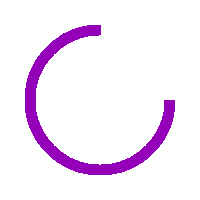Poll shows that the US economy is headed for a shallow recession
A recent Reuters poll suggests that a vast majority of analysts in the US believe the economy will enter a short and light recession later this year. This comes as the country is experiencing surging inflation, which has reached a four-decade high, prompting the Federal Reserve to announce several interest rate hikes since the beginning of the year in an […]



A recent Reuters poll suggests that a vast majority of analysts in the US believe the economy will enter a short and light recession later this year. This comes as the country is experiencing surging inflation, which has reached a four-decade high, prompting the Federal Reserve to announce several interest rate hikes since the beginning of the year in an attempt to battle it.
What are a recession and a shallow recession?
A recession can occur in varying degrees and have a substantial influence on an economy; traditionally, a recession occurs when an economy experiences two consecutive quarters of negative gross domestic product (GDP). However, the topic is surrounded by several other formulas and complexity.
In the context of the US economy, for example, the COVID-19-induced recession lasted only two months, making it one of the shortest cycles on record after economic activity plummeted in April 2020. Furthermore, a panel of economists formed by the National Bureau of Economic Research (NBER) makes the official declaration that an economy is in a recession.
The NBER accounts for nonfarm payrolls, retail sales, and industrial production, among other indicators; however, the private non-profit research group also stated that there are “no fixed rules” about measures and indicators that contribute information to the process or how they are weighted in their decisions.
The organization defines a recession as a “significant decline in economic activity that is spread across the economy and that lasts more than a few months,” and they believe that the depth, diffusion, and duration of the downturn must be addressed individually. Furthermore, “extreme conditionals revealed by one criterion may partially offset weak indications from another,” according to the NBER.
Notably, the official declaration that an economy is in a slump occurs at least a year or more after the downward event has occurred. As a result, another approach, more focused on determining the commencement of a recession, is the employment-based Sahm rule, which states that an economy enters a recession when the three-month rolling average of the unemployment rate climbs half a point from its low.
The rule was developed by and named for former Fed economist Claudia Sahm and is used to predict the commencement of a recession earlier than official forecasts. In contrast to the aforementioned COVID-19-induced recession, some recessions can be longer and more damaging to the economy, such as the Great Recession or the Depression, the impact of which was so severe that it reportedly took a decade or more to restore the labor market.
For several months, there has been concern that the US economy is entering a “shallow recession,” which occurs when economic growth decreases only modestly and for a limited time. This comes after the Fed raised interest rates three times in a row, totaling 375 basis points since its first hike in March of this year, sparking fears of an oncoming recession.
Most economists expect a shallow and short recession: Reuters poll
Reuters questioned 84 economists between December 2 and 8, and all agreed that the Fed will raise interest rates by 50 basis points on December 14. Inflation is currently running significantly beyond the central bank’s 2% objective. However, after rising interest rates by 75 basis points for the fourth time in a row, economists predict a “somewhat weaker” boost of 4.25 percent to 4.50 percent this time.
Economists, who, as a group, can be slower with their recession forecasts, have also estimated that the risk of a recession in the next year or two is at least 70%, up 7% from the previous survey, according to the study. Furthermore, 35 of 48 economists predicted a shallow and brief recession, while eight predicted a long and shallow recession and four predicted no recession.
According to the analysis, inflation is anticipated to remain over the Fed’s objective until at least 2026, and while the labor market remains strong, the greater risk is that rates will peak higher and later than predicted. While some analysts anticipate the fed funds rate will peak early next year at 4.75 percent to 5%, at least 24 of the 72 believe it will rise.
This comes amid evidence of a weakening economy, particularly in the property sector, which was at the heart of the 2008 US crisis. According to reports, home sales have been down over the past nine months. Furthermore, 27 of 45 analysts who submitted quarterly(GDP) projections expect economic growth to slow for two consecutive quarters or more in the coming year.
This article Poll shows that the US economy is headed for a shallow recession appeared first on BreezyScroll.
Read more on BreezyScroll.


